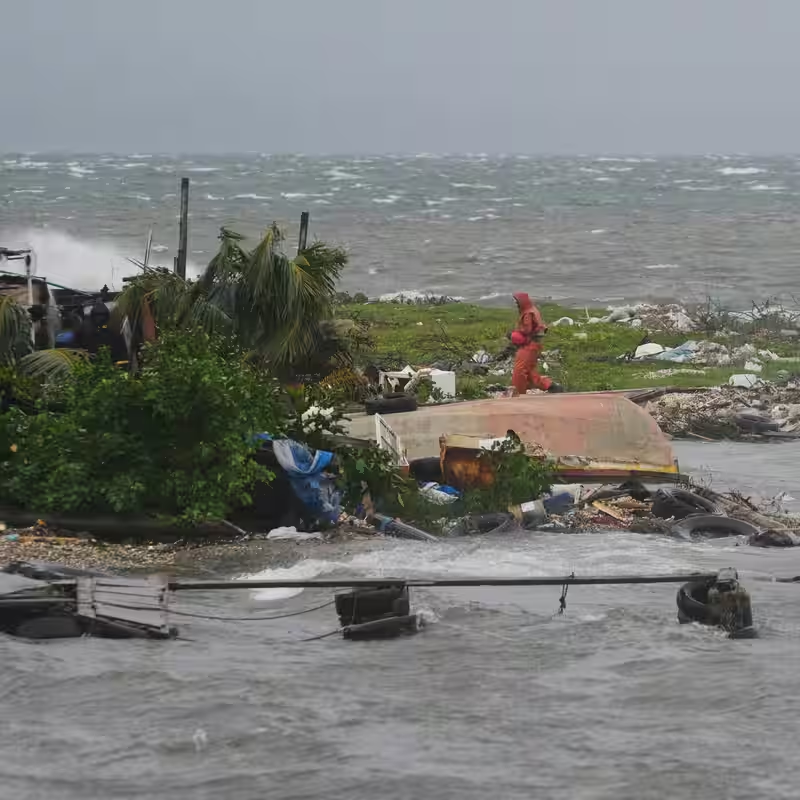Table of Contents
- Storm Makes Landfall as Category 5 Monster
- Widespread Damage Across Southwest Jamaica
- Officials Urge Immediate Shelter
- Warmer Waters Fuel Historic Intensity
- Recovery Could Take Days or Weeks
- Sources
Hurricane Melissa Slams Jamaica as Rare Category 5
Hurricane Melissa made landfall on Jamaica’s southwestern coast on Tuesday, October 28, 2025, with sustained winds of 185 mph—surpassing the peak intensity of Hurricane Katrina and ranking among the strongest Atlantic hurricanes ever recorded.
The storm struck just before noon local time, unleashing catastrophic conditions that left entire communities isolated and without power. Experts from the National Hurricane Center confirmed that only a handful of storms in recorded history have matched Melissa’s ferocity.
Hurricane Melissa Tears Through Homes and Infrastructure
Early reports from affected regions paint a grim picture:
- Rooftops ripped from hospitals, schools, and residential buildings
- Rivers swelling to dangerous levels, triggering flash floods
- Over 300,000 residents without electricity
- Communications disrupted in hard-hit parishes like St. Elizabeth and Westmoreland
“It sounded like a freight train was coming through the house,” said one resident from Negril, who asked to remain anonymous. “The windows shattered, and then the roof just… vanished.”
“Don’t Bet Against Melissa,” Warns Disaster Minister
Desmond McKenzie, Jamaica’s minister responsible for disaster preparedness, issued a stark warning during an emergency press briefing: “Jamaica, this is not the time to be brave. Don’t bet against Melissa. It is a bet we cannot win.”
Despite repeated evacuation orders and shelter openings across the island, officials fear many residents ignored the warnings—potentially worsening the human toll once the storm passes.
Record Ocean Temperatures Supercharge Hurricane Melissa
Climate scientists point to abnormally warm Caribbean sea surface temperatures—up to 2°C above average—as a key factor in Melissa’s explosive intensification.
“We’re seeing conditions that were once rare become increasingly common,” said Dr. Lena Rodriguez, a climatologist at the University of the West Indies. “Warmer oceans provide more fuel for storms to grow rapidly into monsters like Melissa.”
This trend aligns with broader climate models predicting more frequent high-intensity hurricanes in the Atlantic basin.
Assessment and Recovery Efforts Underway
With visibility near zero during the height of the storm, damage assessments remain preliminary. Emergency crews are expected to begin ground surveys as soon as winds subside to safe levels.
International aid organizations, including the Red Cross and USAID, have placed response teams on standby. Jamaica’s government has activated its National Emergency Operations Centre and is coordinating with regional partners through the Caribbean Disaster Emergency Management Agency (CDEMA).
Residents are urged to stay indoors, avoid flooded roads, and await official updates via battery-powered radios or SMS alerts.




